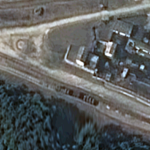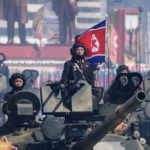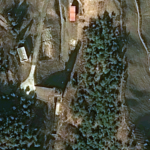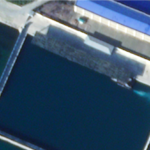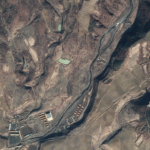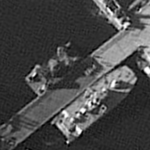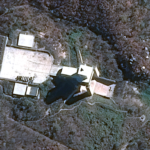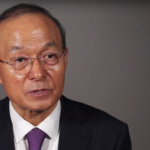February 11, 2020, by Joseph S. Bermudez Jr. and Victor Cha—
Satellite imagery acquired on February 10, 2020 shows the presence of three specialized railcars that have been associated with the movement of radioactive material in the past. The last observed presence of these railcars by Beyond Parallel was in November 2019.
The size and number of the casks observed on the railcars suggest the outbound shipment of irradiated liquid or solid waste, disassembled but contaminated equipment or, potentially, the movement of fissile materials. A less likely alternative is the inbound shipment of radioactive material.
December 20, 2019—
The CSIS Beyond Parallel team compiled an original database of all North Korean provocations since the Korean War in 1953, beginning with the first provocation documented in 1958. There has been more than 280 instances of provocations, including from missile and nuclear tests, airplane hijackings, bombings, exchange of fire, to infiltration and territorial incursions into South Korea.
December 19, 2019, by Joseph S. Bermudez Jr. and Victor Cha—
The Chamjin-ni vertical engine test stand appears to be minimally maintained but apparently capable and available for engine testing at any time.
It is North Korea’s oldest known test stand, developed in the 1980s. There is no evidence of recent tests. This is indicated by the absence of scarring in the exhaust deflector and color-infrared imagery showing healthy vegetation at the end of the exhaust deflector.
December 17, 2019, by Joseph S. Bermudez Jr. and Victor Cha—
As with Beyond Parallel’s December 4 report, satellite imagery of the Sinpo South Shipyard collected on December 14, 2019 does not provide any indication of the launch of the much anticipated “newly built submarine” or preparations for the shipyard’s test stand. The only observation of significance at the shipyard is the presence of a 16-METER class midget submarine (SSW) moored alongside the barely visible submersible missile test stand barge in the shipyard’s secure boat basin.
December 17, 2019, by Joseph S. Bermudez Jr. and Victor Cha—
While speculation (sometimes wild) continues to grow concerning a North Korean end-of-year “surprise,” Beyond Parallel is continuing its recent series of surveys of the North’s weapons of mass destruction (WMD) facilities to determine if there are any new developments. It is our desire to provide objective and factual information to enable decision-makers, policymakers and the general public to better understand the important aspects of the threat posed by North Korea and provide assistance to all in arriving at calm and informed decisions. Our recent surveys include the Sinpo South Shipyard, Sohae Satellite Launching Station, Nampo Submersible Test Stand Barge and Magunpo Solid Rocket Motor Test Stand.
December 14, 2019, by Joseph S. Bermudez Jr. and Victor Cha—
The submersible test stand barge located at the Nampo Navy Shipyard on the west coast of North Korea is likely capable of conducting a SLBM test launch at any time... The submersible test stand barge located at the Nampo Navy Shipyard on the west coast…
December 13, 2019, by Joseph S. Bermudez Jr. and Victor Cha—
The Magunpo Solid Rocket Motor Test Facility is located a few kilometers west of the Hamhung-Hungnam area and along the east coast of North Korea. December 6 imagery shows minor activity at the facility, including the presence of a small truck and some crates. Although no recent test appears to have taken place (i.e., absence of scarring in the exhaust deflector and healthy surrounding vegetation), the facility appears to be well-maintained and ready for solid rocket motor testing at any time.
A successful test of solid fuel propellant engine, particularly at the east test stand, would denote another major advancement in survivable nuclear weapons capability, and would presumably also be designed to put additional pressure on the U.S. to make concessions in negotiations.
December 11, 2019, by Joseph S. Bermudez Jr. and Victor Cha—
On December 7, North Korea conducted what it described as a “…very important test at the Sohae Satellite Launching Ground.” Satellite imagery in the days leading up to and after the test clearly shows that this was a rocket engine test at the vertical engine test stand at Sohae. This test was most probably of a liquid-fuel rocket engine as only liquid-fuel rocket engines have previously been tested here, while large solid rocket motors have been tested at the Magunpo Solid Rocket Motor Test Facility on the east coast and elsewhere. Whether the liquid-fuel rocket engine was an existing model or a new one is unknown.
November 14, 2019, by Joseph S. Bermudez Jr., Victor Cha and Dana Kim—
Recent satellite imagery from November 2019 shows the presence of four specialized railcars that have been associated with the movement of radioactive material in the past. The last observed movement of these railcars by Beyond Parallel was in April 2019. It is unclear whether the railcars are being used for the outbound shipment of irradiated liquid or solid waste, disassembled but contaminated equipment or the movement of fissile material to facilities outside the Yongbyon area. A less likely alternative is the inbound shipment of radioactive material from a facility outside the Yongbyon area.
November 13, 2019—
This Living History interview features former South Korean minister of foreign affairs and trade, Song Min-soon. Song was director general for North American affairs and chief delegate during the six-party talks in 2005. He played a key role in the multilateral denuclearization agreement with North Korea, involving the United States, Japan, South Korea, China, and Russia, achieved in September 2005.
